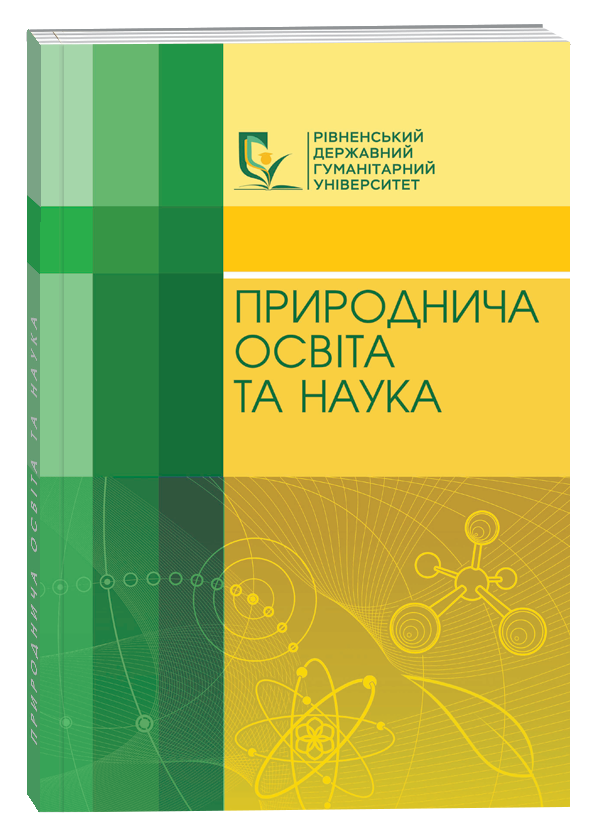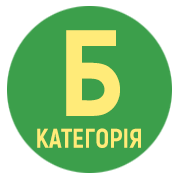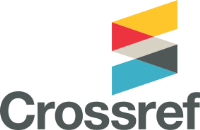EXAMPLES OF USING GROUP LEARNING DURING THE TEACHING OF INTEGRATED COURSES IN THE NATURAL SCIENCES EDUCATIONAL FIELD
Abstract
The article is devoted to the use of group learning in the educational process. The study of its applica- tion during integrated lessons remains relevant. Therefore, the purpose of this article is to explore the rolegroup learning can play in thematic content integration during lessons in integrated courses in the naturalsciences educational field. The article notes that group learning is a significant factor in the development of key competencies among students during the implementation of the "New Ukrainian School" reform. It highlights that this issue is under-researched due to the short duration of the reform, and this article is an attempt to initiate its exploration. Examples of applying group learning for content integration on varioustopics during lessons in integrated natural science courses in the middle school adaptation cycle are consid-ered. It is shown that to successfully develop key competencies in such lessons, students should be organized into research groups according to the following directions: biologists, chemists, physicists, geographers, etc. It is proposed to carry out content integration on a specific topic during a two-lesson mini-cycle. The appropriateness of this approach is justified by the need to complete the practical component of the edu- cational process under the teacher's guidance during extracurricular time. It is suggested to conduct the final stage of thematic integration as a biological tournament among the defined student groups. The article identifies the expected learning outcomes specified in the model programs of integrated courses that can be effectively achieved using group learning. The necessity of creating new groups with different students each time during content integration lessons is substantiated. The examples of using group learning during lessons in integrated natural science courses provided in the article will help teachers in general secondary education institutions effectively realize the advantages of integrated learning.
References
2. Державний стандарт базової середньої освіти. Постанова КМУ № 898 від 30.09.2020 року. URL: https://osvita.ua/legislation/Ser_osv/76886/
3. Дьяконов Г. В. Активні методи групового навчання: діалогічний підхід. Педагогіка вищої та середньої школи. 2012. № 35. С. 188–190.
4. Житник Б.О. Методичний порадник. Форми і методи навчання. Харків : Основа, 2017. 128 с.
5. Засєкіна Т.М. Інтеграція в шкільній природничій освіті: теорія і практика: монографія. Київ : Педагогічна думка, 2020. 400 с.
6. Ільченко В. Р. Технології інтеграції змісту освіти. Інтеграція змісту освіти в профільній школі : зб. наук. пр. Всеукр. круглого столу, 17 квітня 2019 р. (Вип. 11). Полтава : ПОІППО. 184 с.
7. Калініченко Н.А. Формування професійних компетентностей майбутніх учителів біології. Методика навчання природничих дисциплін у середній та вищій школі: зб. матеріалів доп. учасн. міжнар. наук.-практ. конф., 18–19 трав. 2017. Полтава : Полтавський національний педагогічний університет імені В.Г. Короленка. 2017. С. 151–154.
8. Крамаренко С. Г. Інтерактивні техніки навчання як засіб розвитку творчого потенціалу учнів. Відкритий урок. 2012. № 5. С. 7–11.
9. Лійметс Т.В. Групова робота на уроці. Київ. 2015. 62 с.
10. Матеюк О. П. Використання дискусійних методів навчання при вивченні дисципліни «Загальна екологія» : зб. наук праць Національної академії Державної прикордонної служби України. Педагогічні науки. Хмельницький : НАДПСУ, 2020. № 3 (22). С. 124–136.
11. Модельні програми для 5-9 класів нової української школи. URL: https://mon.gov.ua/osvita-2/zagalna-serednya- osvita/osvitni-programi/modelni-navchalni-programi-dlya-5-9-klasiv-novoi-ukrainskoi-shkoli-zaprovadzhuyutsya-poetapno-z-2022-roku
12. Монахов В.Л., Орлов В.А., Фірсов В.В. Диференційоване навчання в середній школі. Педагогіка і психологія, 2014 № 8. С. 187–192.
13. Пащенко Ю.П., Колесніков М.О. Використання інноваційних групових методів при вивченні англійської мови у ЗВО. URL: http://elar.tsatu.edu.ua/bitstream/123456789/10627/1/Сборник%20статей%202020%208.04-312-319. pdf
14. Пометун О.І. Сучасний урок. Інтерактивні технології навчання: наук.-метод. посібник. Київ : А.С.К., 2005. 192 с.
15. Про схвалення Концепції реалізації державної політики у сфері реформування загальної середньої освіти “Нова українська школа” на період до 2029 року (Розпорядження КМУ від 14.12.2016 р. № 988-р.). URL: https://zakon.rada.gov.ua/laws/show/988-2016-р#Text
16. Сучасні види групових взаємодій і техніки їх організації у виховній роботі. URL: https://naurok.com.ua/suchasni-vidi-grupovih-vzaemodiy-i-tehniki-h-organizaci-u-vihovniy-roboti-390360.html
17. Токарєва А.В. Інтегративне навчання як один з перспективних напрямів розвитку сучасної вищої освіти. Педагогіка і психологія, 2014 № 8. С. 184–187.






